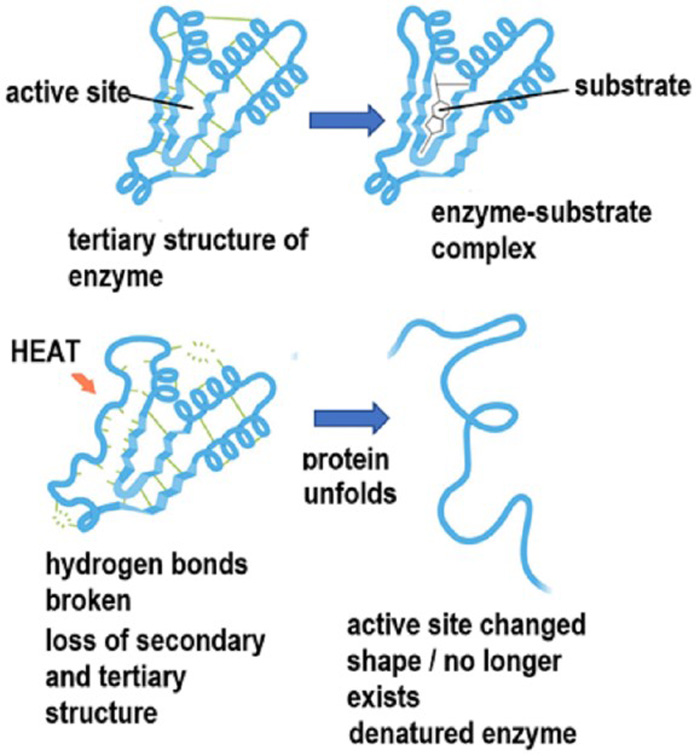Effect of Temperature on Enzymes
As temperature increases particles gain kinetic energy. Up to the optimum temperature for an enzyme, bonds remain intact and can form enzyme-substrate complexes as there is no change to the active site. Below the optimum temperature, as the temperature increases, the enzymes and substrates have more kinetic energy so there are more successful collisions and therefore more enzyme-substrate complexes are formed and the rate of reaction increases.
As temperature increases above the optimum, the increased heat gives more energy to particles. Bonds in the enzyme begin to vibrate and eventually they break – weak hydrogen bonds are broken first. Eventually, there is a loss of secondary and tertiary structure, the 3D shape of the active site changes and the active site can no longer form bonds with the substrate.
The enzyme is now fully denatured.
The effect of increased temperature on enzymes is summarised in the diagram.
